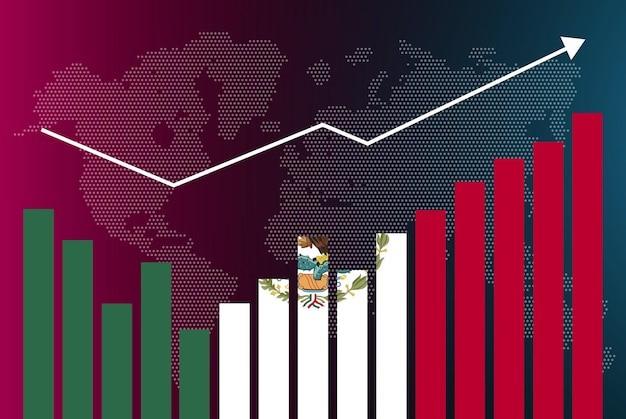Mexico’s economy expanded by 0.7% in the second quarter of 2024, surpassing analysts’ expectations and signaling resilient growth amid global uncertainties. The latest data highlights a stronger-than-anticipated performance driven by key sectors, positioning the country on a positive trajectory despite ongoing challenges in international markets. This uptick offers a promising outlook for Mexico’s economic stability and its role within the broader Latin American region.
Mexico Economy Surpasses Expectations with 0.7 Percent Growth in Second Quarter
Mexico’s economic performance in the second quarter exceeded the expectations of many financial analysts, registering a growth rate of 0.7%. This uptick was primarily driven by robust activity in the manufacturing sector and stronger domestic consumption. The resilience shown in key industries such as automotive production and electronics exports played a pivotal role in sustaining momentum despite global economic uncertainties. Furthermore, consumer spending rebounded, fueled by increased employment rates and rising wages in urban centers.
The positive growth reflects a mixed-but-improving economic landscape, highlighted by several key factors:
- Manufacturing output: Increased demand from North American trade partners boosted export volumes.
- Retail sector: Rising consumer confidence pushed sales higher during the quarter.
- Investment: Private sector investments saw marginal gains, signaling cautious optimism among businesses.
- Government policies: Infrastructure spending contributed modestly but positively to GDP.
| Sector | Growth Contribution | Quarter-over-Quarter % |
|---|---|---|
| Manufacturing | +0.3% | 1.2% |
| Retail | +0.2% | 0.8% |
| Services | +0.1% | 0.4% |
| Construction | +0.1% | 0.3% |
Key Drivers Behind Mexico’s Economic Upsurge and Sectoral Performance Analysis
Mexico’s recent economic momentum can be attributed primarily to robust domestic consumption and a resilient manufacturing sector. Consumer spending increased significantly, supported by improving employment rates and rising wages across urban centers. Additionally, export-oriented industries, particularly automotive and electronics manufacturing, benefited from favorable trade conditions and increased demand from the United States and other key partners. Infrastructure investments and government initiatives aimed at boosting digital connectivity also played a crucial role in sustaining growth amid global uncertainties.
Sectoral analysis reveals a mixed but overall positive panorama. While agriculture and mining sectors showed moderate gains, the services industry emerged as a standout performer, driven by tourism and financial services rebound. The table below summarizes growth contributions by major sectors in Q2:
| Sector | Growth (%) | Key Driver |
|---|---|---|
| Manufacturing | 1.2 | Export demand |
| Services | 0.9 | Tourism & Finance |
| Agriculture | 0.4 | Domestic demand |
| Mining | 0.3 | Commodity prices |
- Policy support: Increased public infrastructure spending accelerated growth.
- Trade agreements: NAFTA’s successor, USMCA, fostered export stability.
- Investment flows: Foreign direct investment showed signs of recovery.
Strategic Recommendations for Sustaining Growth Amid Global Economic Challenges
To maintain momentum amid the ongoing volatility in the global economy, Mexican policymakers and business leaders must prioritize diversification of trade partnerships and foster innovation across key industries. Emphasizing stronger ties with emerging markets, alongside traditional partners such as the U.S. and Canada, will help mitigate risks associated with geopolitical uncertainties. Additionally, enhancing digital infrastructure and supporting tech-driven sectors can accelerate productivity gains, positioning Mexico as a competitive hub for nearshoring and foreign direct investment.
Critical to sustaining growth is the focus on strengthening domestic demand through targeted fiscal measures and workforce development. Investments in education and vocational training aimed at closing the skills gap will empower a growing labor force to contribute more effectively to high-value industries. The following table highlights key strategic initiatives recommended for Mexico to navigate the current global challenges:
| Strategy | Focus Area | Impact |
|---|---|---|
| Trade Diversification | Emerging Markets | Reduced Export Dependency |
| Digital Infrastructure | Technology Sector | Increased Productivity |
| Workforce Development | Education & Training | Skilled Labor Supply |
| Fiscal Stimulus | Domestic Demand | Consumer Spending Growth |
The Conclusion
Mexico’s economy demonstrated unexpected resilience in the second quarter, expanding by 0.7% and surpassing analysts’ predictions. This growth signals a positive momentum as the country navigates global uncertainties and domestic challenges. Observers will closely monitor upcoming economic data to assess whether this trend can be sustained in the months ahead.
